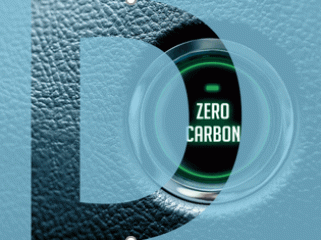 Is deep decarbonization possible? The level of investments will be substantial and require enormous changes to the energy system we have in place today.
Is deep decarbonization possible? The level of investments will be substantial and require enormous changes to the energy system we have in place today.
Taking a higher-level of decarbonization, I have summarized the critical aspects we need to consider when we discuss this area. I have put them in blocks of bullet points here in this opening decarbonization post. I am planning to delve into each of these in later posts.
The opportunities within our energy transition to achieve these
- Clean energy economic growth
- How we make, store, and use energy
- The potential of new services and design
- Unlocking a new age of electrification generation
How decarbonization will be achieved is with a mix of the following:
- Through breakthrough innovation and technologies, we will enable the changes
- Conventional and Renewable boundary-pushing must be a critical mutual ongoing focus
- Decarbonizing the way energy is generated, transmitted, stored, and consumed
- Progressive, evidence-based policies and regulatory ambitions
The progressive measures to show the energy transition is continuously moving to a decarbonizing system need to be based around:
- Consumer propositions, market design, business models and system definition and design
- Energy efficiency improvements, new market design potential
- Resolving the legacy energy system, retrofits, and redesigns, facing up to these quickly
- Innovation improves the performance and reduces the costs as the deliverable on each solution.
- Credible pathways, technology deployment, and adoption
- Deep understanding of how the different parts interact
- A focus on early demonstration and deployments
- The need is for carbon-neutral fuels that can scale (Hydrogen)
- Energy RD&D has current levels of blind spots that need urgent resolution
- Build an open collaborative and robust, diverse research bases that span the whole energy system
We need to work on adoption in multiple ways
- Net-zero means profound transitions and clear roadmaps these need explaining
- Social-wide adoption of low carbon solutions (buildings, transport, etc.)
- Open energy data and digital governance
- Reform of regulatory markets, how consumers will interact and react with energy
- The value in terms of research and innovation, novel technologies
Urgent resolution to the three difficult-to-eliminate emission areas
- Firm, dispatchable electricity overcoming variability
- Hard-to-electricity transport (volumetric density)
- Industrial-sector emissions (heat combustion, process redesigns, and feedstock)
These are the major obstacles, themes, or issues to resolve or understand
- Carbon pollution has yet to peak
- Reducing the cost, expanding the use and emphasis of alternatives- why
- Climate change is occurring already, harming society in numerous and different ways
- The concentration of heat-trapping greenhouse gases
- Frequency and intensity of extreme conditions
- Restoring the natural balance of carbon in the atmosphere
- Replace all unabated fossil fuel combustion
- Deep decarbonization for low-carbon or no-carbon energy systems globally
- Energy is mostly a fungible commodity (wind for coal)
- Finding the markets that value carbon-free attributes of clean energy cost and performance
- Cost and performance are the main drivers of clean energy adoption
- Decreasing carbon intensity of electric generation
- We are past the point of “low-hanging fruit.”
- The present significant limits to the amount of variable generation the grid can accommodate at reasonable cost
- We need a “firm” low carbon dispatchable generation that responds dynamically and can instantaneously match with demand.
- Energize the debate, a “Green New Deal” (GND)
- We are facing an emission cul-de-sac within present innovation, how do we break out of this?
We need a resolution that requires the acceleration of innovation solutions
We need to accelerate innovation, find solutions to atmospheric carbon removal, energy storage, determine the viable economic cases for carbon capture, utilization and storage (CCUS) as a matter of some urgency, develop a plan for the next-generation nuclear power designs, validate carbon-neutral fuels that can have real value and place a greater emphasis on basic energy sciences to exploit and explore viable options.
 So, in summary, to move towards a deep decarbonizing future, we need to address all of the above with increasing urgency, commitment, and resolution.
So, in summary, to move towards a deep decarbonizing future, we need to address all of the above with increasing urgency, commitment, and resolution.
The outcome is Fostering a comprehensive energy innovation system that focuses on decarbonization as the ultimate goal, so critical to the Energy Transition.